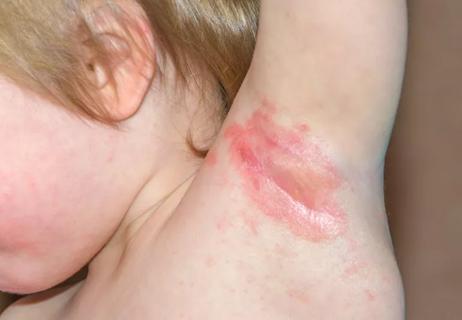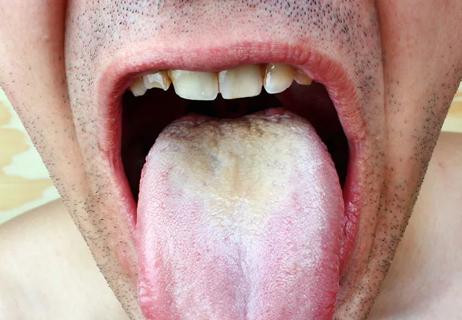It’s not always a cause for alarm, but it could be a yeast infection

It’s normal and healthy for your body to produce vaginal discharge. Like other bodily fluids and secretions (sweat, snot, etc.), it may not be exciting or pleasant, but it’s just something bodies do.
Advertisement
Cleveland Clinic is a non-profit academic medical center. Advertising on our site helps support our mission. We do not endorse non-Cleveland Clinic products or services. Policy
Like leaves falling off of trees or your dog losing the fur of its winter coat, it’s normal for your vagina to shed cells and bacteria, which exit your body in the form of a liquid (or liquid-like) substance. Sometimes, though, changes in your discharge can signify that something is up with your health, like a yeast infection.
So how can you tell? Ob/Gyn Oluwatosin Goje, MD, explains this type of discharge and what to do if you begin to experience it.
When you first notice thick, white discharge, your first reaction might be alarm. Though this kind of discharge is a common symptom of a yeast infection, it could also be a normal change in your body’s regular vaginal discharge.
Everyone who’s assigned female at birth (AFAB) produces vaginal discharge and cervical mucus, but you may not be used to seeing it. “Yours may biodegrade before it makes its way out of your body, or you might produce a lot of discharge and be accustomed to seeing it in your underwear,” Dr. Goje says.
And importantly, everyone’s discharge is different, so there’s a broad spectrum of what’s considered normal. Here are three possible causes of thick, white discharge.
The color and texture of your discharge may change throughout the course of your menstrual cycle. But the substance related to your menstrual cycle is actually cervical mucus, not vaginal discharge — though they both come out of your vagina and can end up in your underwear.
Advertisement
“A thick, white discharge can be standard, especially if you’re not experiencing any abnormal smell or itchiness with it,” Dr. Goje says.
Thick, white discharge usually happens between your period and ovulation. The texture could be sticky and paste-like or creamy, almost like the texture of yogurt.
The sudden appearance of thick, white discharge could simply be your new normal. That’s because even if you’ve long been used to one type of discharge (or not much discharge at all), your discharge can change as you age, particularly after:
“Sometimes, what you think is abnormal is really just a change from what you’re used to,” Dr. Goje says.
Yeast occurs naturally in your vagina, but sometimes, it can grow out of whack and cause an imbalance known as a yeast infection. One of the most common symptoms is thick, white, clumpy discharge the texture of cottage cheese. It often coincides with symptoms like vaginal burning or itchiness and a strange or strong smell down there.
“The vagina has both good and bad bacteria — what we call natural vaginal flora,” Dr. Goje explains. “Any change in the composition of your vaginal flora can cause a change in the consistency of your vaginal discharge.”
Yeast infections are common and treatable. You can buy an over-the-counter cream to try to clear it up on your own, or your doctor can prescribe a cream or a pill.
And here’s an important note: Even if you’re not having clumpy, white discharge, you could still have a yeast infection. “This kind of discharge is only present in about 50% of yeast infections,” Dr. Goje says. Some people have more of a creamy, yellow discharge, while others don’t have any strange discharge at all.
Your doctor is the only one who can tell you for sure whether your discharge is healthy, so if you’re experiencing discharge that’s new, unusual, frequent or otherwise concerning, it’s time to check in with them.
“When patients are experiencing abnormal vaginal discharge, I always validate their concerns,” Dr. Goje says.” Sometimes, though, it turns out that what patients think is not normal is simply a change from what they’re used to.”
To figure it out, your doctor will ask questions, like: “When did it start? When does it occur? Are you having any other symptoms?” They may also run tests to help clue them in to whether it’s a problem.
So, keep an eye on your vaginal discharge for any sudden changes in color, texture or smell, but remember: Some amount of discharge is also part of a healthily functioning vagina. It’s a sign that your vagina is doing its job!
Advertisement
Learn more about our editorial process.
Advertisement

Your face? Your armpits? Your butt? Yes, yeast infections can affect many parts of your body

Treat the fungal infection with these solutions

The short answer from an obstetrician/gynecologist

Yogurt, vinegar and coconut oil, oh my

Bleeding is a risk and warrants taking care, but the reward of this lifesaving medication is great

Type 2 diabetes isn’t inevitable with these dietary changes

Applying a hot or cold compress can help with pain